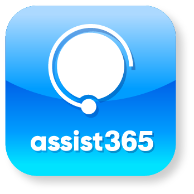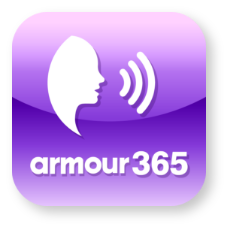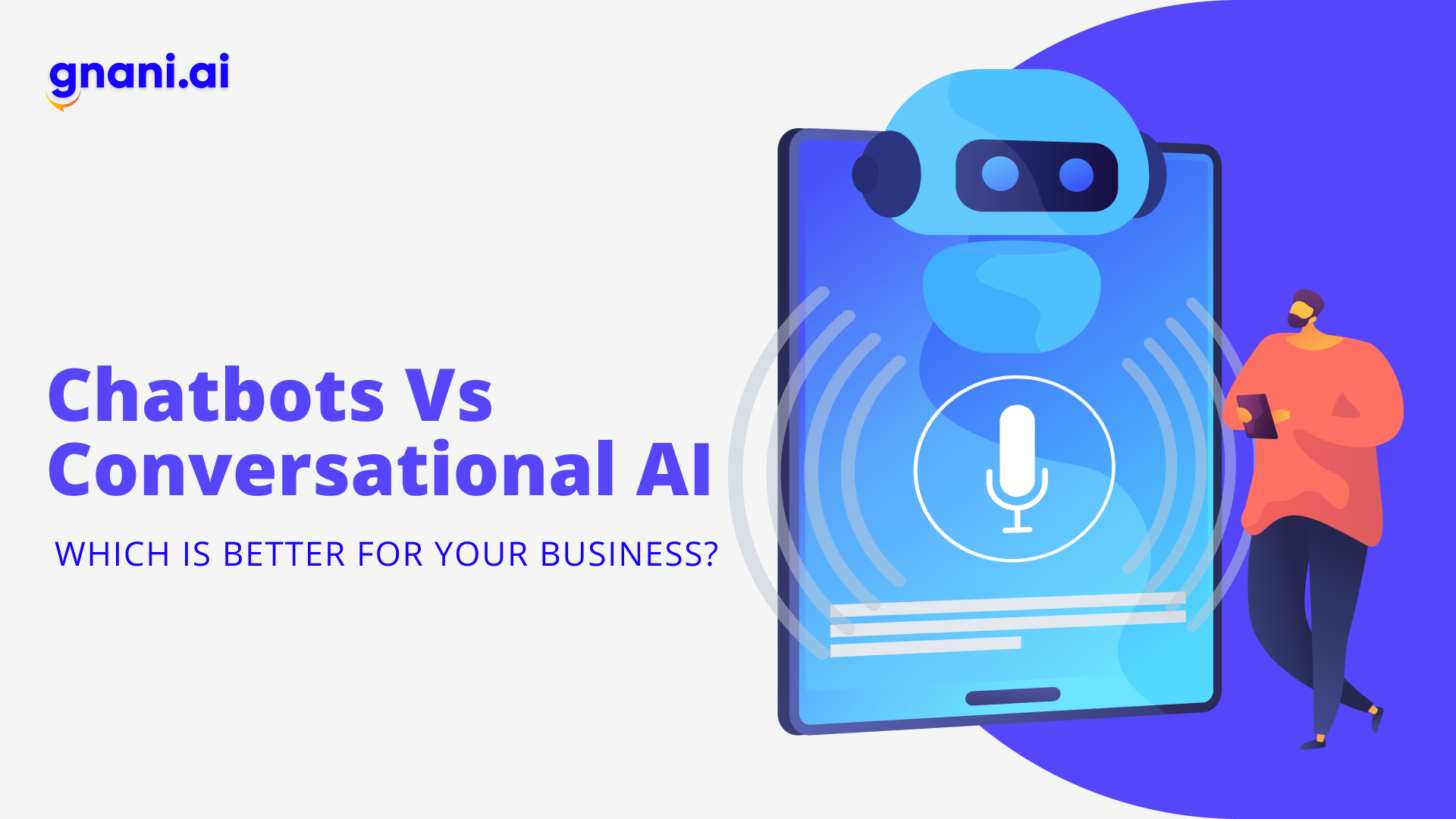Chatbots Vs Conversational AI: Which Is Better For Your Business?
Chatbots and conversational AI are often lumped together, but there are other differences besides the obvious one of medium- chatbots display written text, while conversational AI mimics human communication. Depending upon the needs of an organization, one or both types can come in handy to achieve various business goals.
Conversational AI includes both chatbots and voice bots (also known as virtual assistants). The voice bots can perform a lot more tasks than chatbots since they are designed to mimic human conversation and pick up on vocal nuances. Plus, AI-powered conversational AI voice bots can deliver a more empathetic customer interaction when compared to chatbots which can only use texts. Conversational AI tools are fast becoming integral to smooth out operations in various industries.
What is Conversational AI?
Chatbots are more familiar to us than conversational AI. Most websites place the chatbots on principal landing pages, and bots can answer over 80% of standard questions from users. By 2024, the global chatbot market may be worth $994 million. Not all chatbots are AI-based though many people think they are.
At the most basic level, a chatbot is a rule-based program working on a decision tree. They are designed to anticipate all possible questions a customer could ask. The rules could be very simple or very complex, but the scripted chatbot cannot answer questions beyond the rules.
A conversational AI uses machine learning and natural language processing to understand the context of questions and formulate responses. This conversational AI agent could be a chatbot or a voicebot. The more these AI agents are trained and given information to learn, the better they respond.
When businesses grow, they feel the need to improve efficiencies and the cost-effectiveness of various processes. For customer-facing businesses, customer support is a critical function and also one of the most expensive and time-consuming. Most brands are deploying conversational AI to scale up customer support efficiency and also to improve customer experience.
Conversational AI skills are not only limited to providing customer support; they can also be deployed for bill payments, customer onboarding, lead nurturing, etc. In fact, 28% of companies use AI in marketing.
Some Examples of Conversational AI Agents
The most famous examples of Conversational AI voice agents are Apple’s Siri, Google Assistant, and Amazon’s Alexa. They respond to voice commands and perform several functions.
There are companies that make chatbots and voicebots to perform functions like hiring cabs, online shopping, booking appointments, tracking fitness, etc. Facebook Messenger has integrated peer-peer payments along with a chatbot.
Gnani.ai has voicebots for myriad purposes like call center automation, FAQs, payment reminders, conducting surveys, etc.
How is Conversational AI related to Chatbots?
Conversational AI is the ‘conversation’ part of an AI-based chatbot. AI-based chatbots use conversational AI to understand and converse with the user.
Machine learning helps chatbots to remember the things that have been said to them.
Natural language processing lets chatbots understand a broader input range and determine the intent behind the user’s messages. Further, intelligent analysis lets chatbots make recommendations based on the user’s records and past interactions.
Which is better?
Conversational AI bots are becoming more popular than rule-based chatbots now. Despite the lower cost of making a decision tree chat program, an AI-based conversational agent turns out less expensive in the long run. AI bots are also more scalable than chatbots, and over time reduce the burden of tedious, repetitive tasks.
This is because conversational AI agents can be trained over time and fed with the information they process to give answers beyond the initial scope. They can also provide omnichannel support and be integrated with other applications to extract a variety of insights to meet business goals.
Among chatbots and voicebots, the best conversational AI may be the voicebot. A chatbot assumes a level of competency in certain languages and relies on people putting in the effort to type. With a voice bot, people can get their issues resolved much faster by speaking in a natural manner. We can speak about 161 words per minute but type only about 53 words.
Voice conversations come much easier than texts. It also requires less effort to frame the queries. They also free up people to multitask, unlike chatbots. Voicebots can also provide a more personalized experience. Pre-trained multifaceted conversational AI voice bots can be deployed at every stage of the customer journey and can automate nearly 60% of the work.
The voice bots can be trained more easily to handle various languages and can also process various accents, inflections, detect context and sentiment, etc. that chatbots cannot do. More complex problems need to be escalated to human agents anyway.
Voicebots can reduce simpler, more mundane interactions that don’t need human effort and escalate only the very complex issues to human agents that need special attention or intelligence. This is why voicebot implementation shows a 70-80% reduction in operating costs and an over 50% improvement in agent availability for companies having a large customer base.
Plus, there are conversational AI APIs to help enterprises and businesses looking to add conversational AI into their support and marketing systems. Instead of building an AI bot from the ground up and training it with thousands of data, conversational AI API will make the job simple.
If you’re looking for an effective way to automate various aspects of your business interface, Gnani.ai has a variety of voice-based conversational agents.
Frequently Asked Questions
What is the difference between conversational AI and a chatbot?
Conversational AI is all about the tools and programming that allow a computer to mimic and carry out conversational experiences with people. However, a chatbot is a program that can (but doesn’t always) use conversational AI. It’s the program that communicates with people.
What are conversational chatbots?
Conversational chatbot solutions are AI-powered virtual agents that provide a more human-like experience. In opposition to rules-based chatbots, they are capable of carrying on a natural conversation and understanding the meanings of words.





